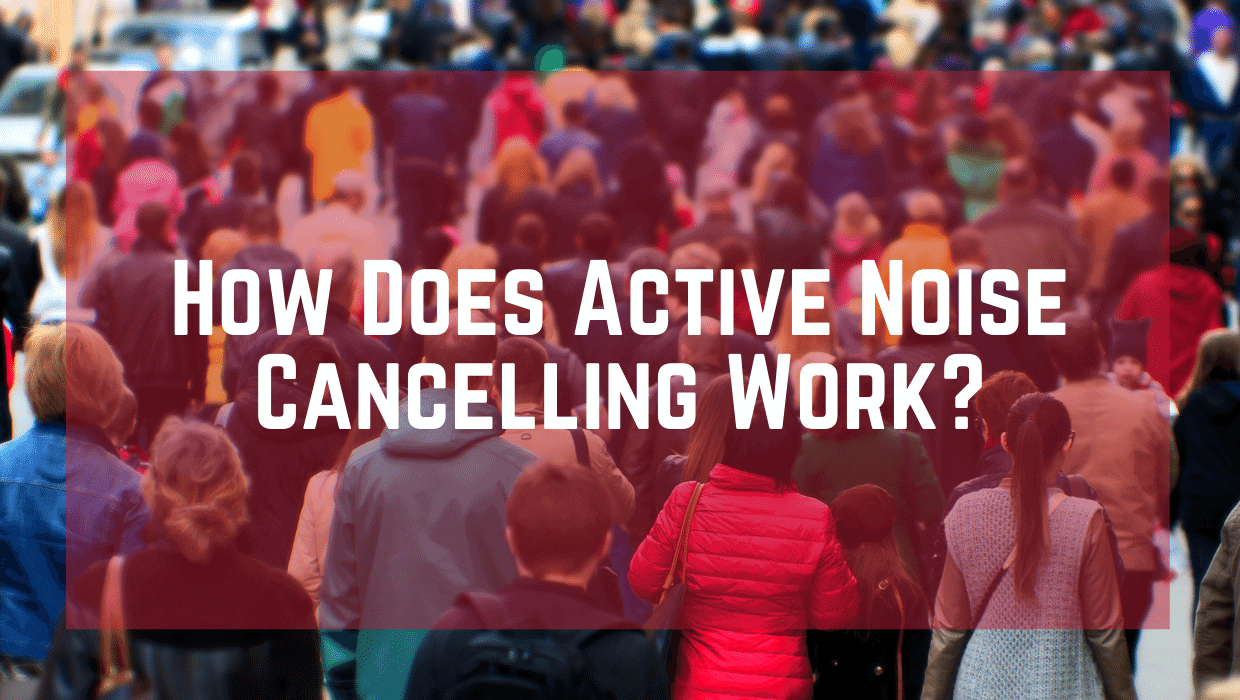In recent years we’ve seen noise cancellation become a standard feature for consumer headphones – and users are raving about the benefits of accessing peace and quiet in an ever-noisier world. Noise cancelling headphones draw on a technology developed for airplane pilots, active noise cancellation (also known as ANC). Active noise cancellation uses an innovative strategy to negate incoming, low-frequency sounds and leave you hearing virtually nothing.
Using active noise cancellation, headphones can reduce incoming sound by up to 45 decibels (with an average of around 30 dB) helping to decrease the amount of harmful noise we are exposed to everyday.
A Noisy World
Depending on where you live, your daily life may pose a real risk to your hearing. Our auditory system is incredibly sensitive – our ears are designed to detect and respond to very soft sounds. However, with this sensitivity, our hearing depends on small sensory cells that can become easily damaged – most often by the stress of loud noise. Loud noises strain the sensory hair cells of the inner ear, and can push them to a breaking point. When a hair cell is injured it has no means of recovering or replacing itself and permanently decreases our hearing sensitivity.
The louder the noise, the quicker it can cause lasting damage to our hearing. A steady drone of 75 dB, around the sound level of heavy traffic, will begin causing hearing damage after 24 hours of exposure. At a louder volume, a rock concert amplified to 105 dB can do the same lasting damage in under 15 minutes. Close range loud noises like fireworks or gunshots (often 120 dB or louder) will cause instant hearing damage to unprotected ears.
For city dwellers or those in loud professions, noise exposure may seem like a constant in life. An average train commute can create a background noise level around 75 dB. Busy traffic and city noise can also be equally high. Airport, construction and factory workers are regularly exposed to jobsite noise levels that exceed 85 dB (at 85 dB hearing is permanently damaged at around 8 hours of exposure, making it a critical threshold for workplace safety standards).
The Science of Noise Cancellation
The technology of noise cancellation is based on understanding the properties of waves. When two waveforms collide, they form a resulting waveform that is shaped like the two waves added together. When the peak of a wave combines with the valley of the wave, they cancel each other out, nullifying the wave.
Active noise cancelling headphones work by sending cancelling incoming soundwaves by generating signals that are the inverse of the incoming wave. The headphones use microphones to detect incoming sound in the environment, and then generate the inverse wave. The peaks of the incoming soundwave are cancelled by generated valleys, and the sound is no longer perceptible to our hearing.
Active noise cancelling works best for low frequency (“deeper”) sounds and reduces incoming noise to the ear by around 30 dB, potentially reducing harmful noise exposure by a significant margin. Active noise cancellation works on midrange and high frequency sounds as well, just with a more limited muting effect.
Noise cancelling was originally developed for pilots to make long flights more manageable. As they seeped into the consumer marketplace they were first marketed to travellers with similar exposure to the low drone of an airplane. The technology soon coupled with traditional audio headphones reaching music lovers. Nowadays, people who bought the headphones for music listening are also finding them useful tools for accessing peace and quiet.
Is Active Noise Cancellation For You?
From getting clearer sound to preventing harmful noise, current noise reduction technologies have the potential to be useful to almost everyone in our society. Protecting your hearing around dangerously loud noises is the best way to prevent hearing loss and using noise cancelling headphones can help reduce some everyday noises to safe listening levels.
Research is finding that reducing our noise exposure can improve other areas of our health as well. Recent findings show that noise exposure is related to stress and anxiety and greater noise exposure correlates with increased rates of cardiovascular problems. Finding peace and quiet in our loud and fast-paced world has long-term benefits you don’t want to ignore.
Regular hearing tests are an important part of keeping tabs on your hearing abilities. Contact us today to schedule an appointment!

